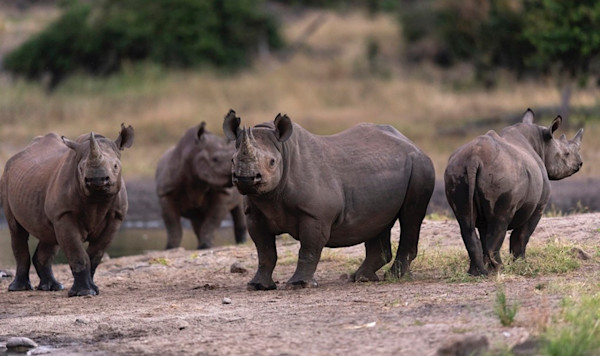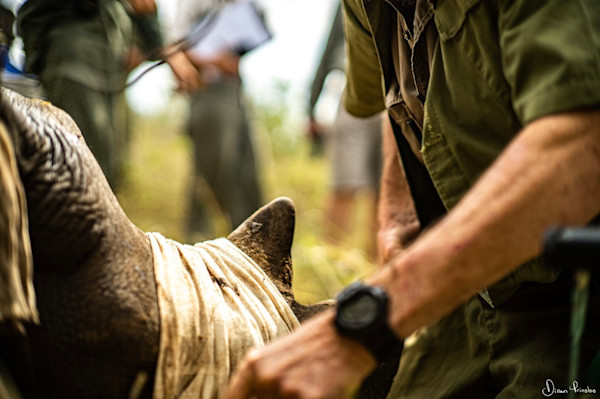March 2017
A day trip to Gonarezhou National Park
Share:
A day trip to Gonarezhou National Park
Gonarezhou National Park neighbours the Malilangwe Reserve to the south and is a vast scenic park full of rugged and beautiful landscapes that stretch over 5 000 square kilometres. Gonarezhou means “Place of Many Elephants” and it is here that you’ll find some of the largest-tusked elephants that remain in the world.
We set off on our day trip, armed with a packed lunch, and headed south through our reserve to an entrance point of the national park at Chipinda Pools. It was overcast with a slight drizzle, and we stopped off to watch the Runde in full flow as it thoroughly washed its widest banks and jettisoned debris it no longer wanted.
From there we followed the Runde to Chilojo Cliffs stopping for some excellent birding and to spot wildlife here and there. The park is home to most of the wildlife we see on our reserve, and has several packs of wild dogs roaming its expansive area. Its rivers are also home to aquatic wildlife such as the Zambezi shark, freshwater goby, black bream and the unique turquoise killifish. This landmark baobab has a hole right through its trunk, caused by elephants.
We were concerned that this baby croc found in a water-filled furrow on the side of the road had wandered too far from its home dam, but upon closer inspection we noticed these thick black knots of toad tadpoles in the furrow too, and knew that this young snapper would be snacking on these for all its nutritional needs.
This is one of the famed tuskers that roam the area. You can see a ‘lump’ on the top of his neck – this is a radio collar. Excellent conservation initiatives are undertaken in the park by organisations that include the Frankfurt Zoological Society and African Wildlife Conservation Fund, and the monitoring of emerging and large tuskers is one of these initiatives. The cow elephant below gave us a clear message that she wanted to be left alone, and when we noticed how full her teats were it became clear she had a very young calf hidden in the bushes behind her.
We ‘caught’ these ‘naughty’ baboons raiding a baobab for fruit – of course they were doing nothing wrong but they seemed to have such a guilty complex! They scrambled down the tree using the natural holes and scars of the tree as hand grips and, when these ran out, took giant leaps of faith into the thick foliage below.
Some baobabs have consistent scars up their trunks, and these have been made by human honey collectors. The collector would have chopped into the trunk, sometimes even hammering a peg into it, and these would have formed a type of climbing ladder to reach the honey each season.
Later on we came across these three baboons that were just hanging out, looking as if butter wouldn’t melt in their mouths. Baboons never disappoint with their behaviour – you just have to laugh at their gross misconduct, mischievousness, pranks and pure devilry!
During our exploration of the park we came across these beautiful antelope species. This pair of klipspringers staked their territoryfrom a rocky outcrop. The male was on the highest point, lying down resting but still keeping a good lookout for potential danger, and the female stood poised on her ballerina hooves, chewing the cud.
The female kudu strolled through a meadow dotted with mauve flowers. The green season is such a beautiful time to visit the park or any safari destination. The skies are dramatic, the animals are well-fed and gathered in herds, the vegetation is lush, bright and especially intense after it’s rained and droplets still cling to the leaves and petals. These docile impalas and their lambs stood to attention as we passed, making sure we were no threat. Gonarezhou’s wildlife is not as concentrated or diverse as Malilangwe’s, and it is still wild in every sense of the word. The remoteness and ruggedness of the area means the animals are not used to seeing humans regularly and it’s possible that you may be one of the few people that some of the youngsters have ever seen.
One of the most prominent and enduring natural features of Gonarezhou are these majestic Chilojo Cliffs. The striated red Jurassic/Cretaceous sandstone cliffs have been formed through eons of erosion and overlook the Runde valley. The cliffs rise 180 metres above the river course.
This was where we stopped for brunch. There’s a simple picnic site and it’s the ideal place to contemplate the fragile beauty of life. The Runde was in full flow and such a contrast to winter when it’s no more than a dry trickle in a sandy river bed. Thanks to the rain the strata of the cliffs looked saturated and clear and features like The Pinnacle stood out more than ever.
It is possible to camp in the Gonarezhou National Park, and with time on your hands and enough air in your lungs you can hike to the upper viewpoint of the Chilojo Cliffs. From up there you’ll have endless views over the reserve. At 5 000 square kilometres it’s bigger than the Grand Canyon National Park.
One of the highlights of our day trip was to see a large number of lesser spotted eagles (Aquila pomarina) gathered in one area and perching in the trees. They would have arrived here from their Baltic breeding grounds from mid-October. Their southward flight takes approximately 50 days, while their return migration in March takes twice as long. They follow the rain fronts as these induce termite eruptions, which are their main source of food.
In the second photo a lesser spotted eagle occupies the same tree as a Meves’s starling (lamprotornis mevesii), two fork-tailed drongos (Dicrurus adsimilis) and a southern grey-headed sparrow (Passer diffuses).
Gonarezhou is a birder’s paradise. Some of the more colourful species we saw (see the following page) included the white-fronted bee-eater (Merops bullockoides), European bee-eater (Merops apiaster) and Diderick cuckoo (Chrysococcyx caprius).
If you are spending some time at Singita Pamushana I strongly recommend a day trip to Gonarezhou. It is essentially an all-day game drive to an pristine wilderness paradise.



